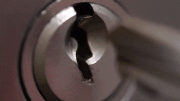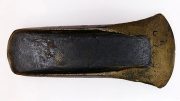
Researchers at the University of Cambridge have developed a new type of flexible device that can wrap around nerve fibers without causing damage, using techniques from flexible electronics and soft robotics. (Artist’s concept.) Credit: SciTechDaily.com
Cambridge researchers have created flexible, minimally invasive devices that can wrap around nerves, offering new ways to treat neurological conditions and control prosthetics.
Researchers have developed tiny, flexible devices that can wrap around individual nerve fibers without damaging them.
The researchers, from the University of Cambridge, combined flexible electronics and soft robotics techniques to develop the devices, which could be used for the diagnosis and treatment of a range of disorders, including epilepsy and chronic pain, or the control of prosthetic limbs.
Advancements in Peripheral Nerve Interfaces
Current tools for interfacing with the peripheral nerves – the 43 pairs of motor and sensory nerves that connect the brain and the spinal cord – are outdated, bulky, and carry a high risk of nerve injury. However, the robotic nerve ‘cuffs’ developed by the Cambridge team are sensitive enough to grasp or wrap around delicate nerve fibers without causing any damage.
Tests of the nerve cuffs in rats showed that the devices only require tiny voltages to change shape in a controlled way, forming a self-closing loop around nerves without the need for surgical sutures or glues.
Potential Applications and Benefits
The researchers say the combination of soft electrical actuators with neurotechnology could be an answer to minimally invasive monitoring and treatment for a range of neurological conditions. The results are reported today (April 26) in the journal Nature Materials.
Electric nerve implants can be used to either stimulate or block signals in target nerves. For example, they might help relieve pain by blocking pain signals, or they could be used to restore movement in paralyzed limbs by sending electrical signals to the nerves. Nerve monitoring is also a standard surgical procedure when operating in areas of the body containing a high concentration of nerve fibers, such as anywhere near the spinal cord.
These implants allow direct access to nerve fibers, but they come with certain risks. “Nerve implants come with a high risk of nerve injury,” said Professor George Malliaras from Cambridge’s Department of Engineering, who led the research. “Nerves are small and highly delicate, so anytime you put something large, like an electrode, in contact with them, it represents a danger to the nerves.”
Challenges and Innovations in Nerve Cuff Design
“Nerve cuffs that wrap around nerves are the least invasive implants currently available, but despite this they are still too bulky, stiff, and difficult to implant, requiring significant handling and potential trauma to the nerve,” said co-author Dr. Damiano Barone from Cambridge’s Department of Clinical Neurosciences.
The researchers designed a new type of nerve cuff made from conducting polymers, normally used in soft robotics. The ultra-thin cuffs are engineered in two separate layers. Applying tiny amounts of electricity – just a few hundred millivolts – causes the devices to swell or shrink.
The cuffs are small enough that they can be rolled up into a needle and injected near the target nerve. When activated electrically, the cuffs will change their shape to wrap around the nerve, allowing nerve activity to be monitored or altered.
“To ensure the safe use of these devices inside the body, we have managed to reduce the voltage required for actuation to very low values,” said Dr. Chaoqun Dong, the paper’s first author. “What’s even more significant is that these cuffs can change shape in both directions and be reprogrammed. This means surgeons can adjust how tightly the device fits around a nerve until they get the best results for recording and stimulating the nerve.”
Future Directions and Clinical Implications
Tests in rats showed that the cuffs could be successfully placed without surgery, and they formed a self-closing loop around the target nerve. The researchers are planning further testing of the devices in animal models, and are hoping to begin testing in humans within the next few years.
“Using this approach, we can reach nerves that are difficult to reach through open surgery, such as the nerves that control, pain, vision, or hearing, but without the need to implant anything inside the brain,” said Barone. “The ability to place these cuffs so they wrap around the nerves makes this a much easier procedure for surgeons, and it’s less risky for patients.”
“The ability to make an implant that can change shape through electrical activation opens up a range of future possibilities for highly targeted treatments,” said Malliaras. “In future, we might be able to have implants that can move through the body, or even into the brain – it makes you dream how we could use technology to benefit patients in future.”
Reference: “Electrochemically actuated microelectrodes for minimally invasive peripheral nerve interfaces” by Chaoqun Dong, Alejandro Carnicer-Lombarte, Filippo Bonafè, Botian Huang, Sagnik Middya, Amy Jin, Xudong Tao, Sanggil Han, Manohar Bance, Damiano G. Barone, Beatrice Fraboni and George G. Malliaras, 26 April 2024, Nature Materials.
DOI: 10.1038/s41563-024-01886-0
The research was supported in part by the Swiss National Science Foundation, the Cambridge Trust, and the Engineering and Physical Sciences Research Council (EPSRC), part of UK Research and Innovation (UKRI).









Be the first to comment on "Tiny Robotic Nerve “Cuffs” Could Transform How We Treat Neurological Conditions"